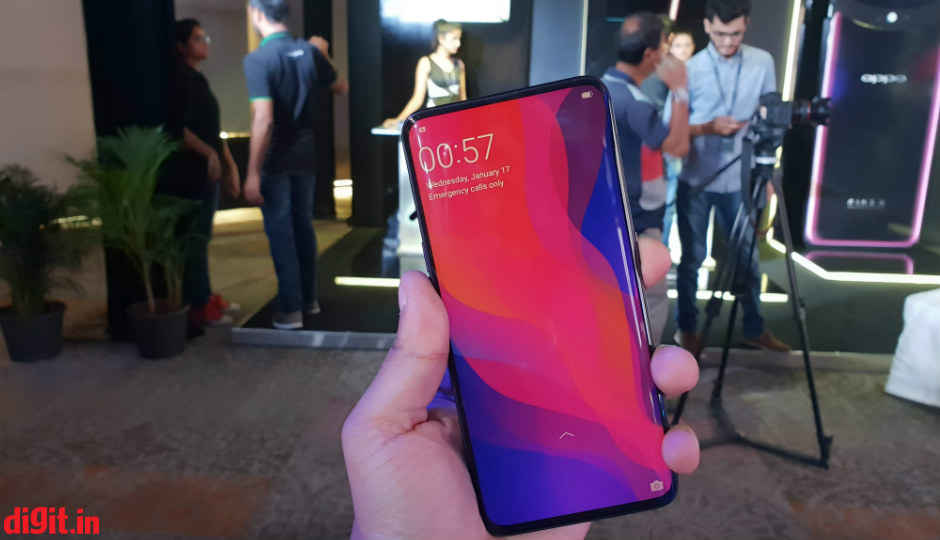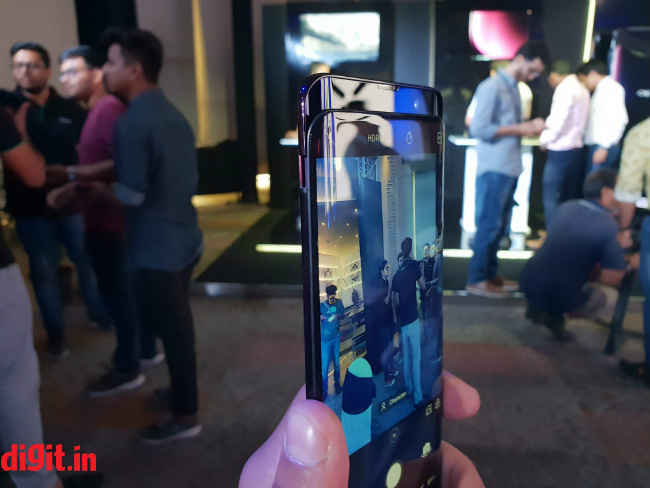Oppo Find X First Impressions: Where did the notch go?
The Oppo Find X finds an innovative way to remove the notch by offering a motorised unit to house the front and rear cameras.

Innovation in smartphones this year has mostly been absent as everyone has been focussed on copying the iPhone X or making incremental changes in the design and features. As a result, the notch has pretty much taken over Android smartphones.. But as many mentioned, the notch was only a stopgap solution, a means to achieve more screen real estate without increasing the size of the phone. The Oppo Find X takes a whole different approach, one that avoids the notch altogether to offer a truly edge-to-edge display. Oppo’s Find series has had a reputation of introducing new technologies and that is exactly what the Find X does.
 Survey
SurveyWhere did the notch go?
It’s interesting to see companies that celebrated the notch at the beginning of the year finding solutions to move away from it. Vivo did it with a pop-out selfie camera, while the Find X puts both the front and the rear camera in a motorised unit. The cameras pop out of the phone when you need it, and goes back inside when you don’t. That does pose the question of how long it will take for the motorised unit to slow down or stop functioning. Also, the phone performs 3D face unlock using a dot projector and an IR sensor much like the iPhone X (no innovation there), which will require the camera to spring in and out every time you unlock the phone. That’s a lot of springing in and out in the phone’s life cycle. The motorised camera also means the screen has no interruptions whatsoever and stretches all the way to the edges. There are thin, almost negligible bezels around the sides and the phone is nicely curved to allow for better ergonomics. Add to that a shiny aluminium frame with radiant colour options and you have a device that looks every bit as premium as any other big-brand flagship. Interestingly, a tiny slit on the top of the display acts as the earpiece while the proximity sensor is embedded under the panel.
Flagship Price, flagship hardware
Clearly, Oppo has spent a lot on R&D to develop a whole new way to get rid of the notch. But that doesn’t mean the device skimps on the hardware it offers. The flagship Qualcomm Snapdragon 845 SoC powers the device along with 8GB of RAM and 256GB of storage. Thanks to the motorised camera, the Oppo Find X fits a 6.42-inch AMOLED panel with 93.8-percent screen-to-body ratio. The display feels quite immersive and vibrant. The extra screen real estate allows more space for multi-tasking. For Rs 59,990 that’s pretty much as powerful as it gets. Add to that a 3,730mAh battery with Oppo’s VOOC charging and you have a phone that looks like an all-rounder.
‘Stealth’ cameras
Oppo likes to stress a lot on the cameras it offers in their phones and the Find X is no exception. At the back of the motorised unit is the dual camera unit with the LED flash in between. You get a 16-megapixel + 20-megapixel camera at the back. The secondary sensor is used for portrait shots and 2X zoom. On the front is a 24-megapixel sensor. The lenses at the back have an aperture of f/2.0 along with OIS and phase-detection autofocus. There’s of course AI in the camera. The rear camera can recognise scenes and apply the relevant camera settings, make portrait shots better and what not. The front camera uses the 3D projector to apply 3D lighting effects, again a feature taken from the iPhone X. The best part of the camera is to see it pop out every time you launch the camera app (which again looks similar to iOS). It’s a novelty that kept me engaged the most for the little time I had the phone with me. However, I soon realised I won’t be able to put the phone in a case thanks to the motorised unit that will need to pop out when needed. But then again, with all the fear of surveillance through phone cameras, a pop out camera is the best way to tackle that paranoia.
3D Face Unlock
As I mentioned before, the motorised camera unit also houses a 3D dot projector that is used to scan your face in three dimensions to offer more secure face unlock. The dot projector combined with a IR camera and other sensors can map 15,000 dots on your face to authenticate and unlock. That’s pretty similar to what the iPhone X does. Every time you need to unlock your phone, the camera pops out, scans your face and lets you in. All of that happens pretty fast. There’s no fingerprint sensor, so face unlock is all you can rely on. The 3D camera is also used to apply 3D lighting effects and to create stickers based on your facial expressions.
In the hand:
The Oppo Find X belongs to the crop of phones with edge-to-edge panels. While that offers a larger screen real estate to play around with, it also brings newer issues. Palm rejection is one. Since there’s absolutely no space to hold the phone without touching the display, there were a lot of accidental touches. Unlike the Galaxy S9, which has superior palm rejection algorithms to prevent accidental touches on its curved screen, there was no such thing in the Find X. The rear panel is also quite smudge-prone. Smudges are also more visible because of the glossy exterior. Yet, it does feel quite premium to hold and use the phone. In terms of the actual software, the ColorOS 5.1 UI can get some time to get used to if you are coming from a stock Android phone. There’s no app drawer and the Settings menu is vastly different from your standard stock Android phone.
First Impressions
The Oppo Find X for its innovative design stands out from the rest of the crop of flagships that launched this year sporting a notch. But being different is one thing, being useful and different is a whole other thing. And while the Find X will score points in being innovative, whether than innovation is actually useful can only be said after we have extensively reviewed the phone. So, stay tuned!
